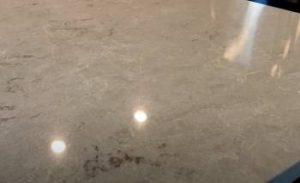Form-A-Drain is a popular drainage solution for many homeowners and builders, providing an effective way to manage water around the foundation of a structure. However, like any system, it comes with its share of problems.
In this comprehensive article, we’ll dive deep into the problems with Form-A-Drain, examine its pros and cons, and provide you with some frequently asked questions about this drainage solution.
Let’s get started!
Problems With Form-A-Drain
- Clogging Issues

One of the main problems with Form-A-Drain is the potential for clogging.
As with any drainage system, debris like soil, leaves, and sediment can accumulate and obstruct the flow of water.
If left unaddressed, this can lead to water pooling around the foundation and cause structural damage.
Regular maintenance, like cleaning and inspecting the system, is necessary to prevent clogs and maintain optimal performance.
- Limited Flexibility
The Form-A-Drain system is designed to be installed during the construction phase, which can limit its usefulness for existing structures.
If you’re looking to retrofit an older building with a new drainage system, you may need to explore other options like French drains or exterior waterproofing solutions.
- Potential for Improper Installation
As with any construction project, the success of a Form-A-Drain installation largely depends on the skill and experience of the installer. If installed incorrectly, the system may not function as intended, leading to water management problems and potentially costly repairs.
Also Read: Problems With Walkout Basement Drainage.
Is Form-A-Drain Worth It?
- Easy Installation
One of the main benefits of the Form-A-Drain system is its ease of installation. It is designed to be installed during the construction phase, making it less labor-intensive compared to traditional drainage solutions like French drains.
This streamlined installation process saves time and labor costs for builders and homeowners.
- Dual Functionality
Form-A-Drain is a unique system that combines footing form and drainage in one product. It serves as a form for the concrete footing while also functioning as a perimeter drain.
This dual functionality eliminates the need for additional materials, reducing the overall cost of construction.
- Durable Materials
The Form-A-Drain system is made from high-quality, rigid PVC material. This makes it resistant to cracking and corrosion, ensuring a long-lasting and low-maintenance solution for managing water around the foundation.
If you love it, here is how to do it!
Frequently Asked Questions (FAQ)
Form-A-Drain is a versatile system that functions as both a footing form and a perimeter drain. It is installed around the foundation during construction, providing a stable form for pouring concrete footings while also collecting and channeling water away from the structure. The dual functionality of Form-A-Drain helps to reduce labor and material costs, making it an attractive option for many builders.
Fixing a clogged foundation drain typically involves cleaning out the debris causing the blockage. This can be done using a high-pressure water jet or by manually removing the obstruction. In some cases, it may be necessary to excavate around the drain to access the problem area. To prevent clogs in the future, consider installing a filter or screen to keep debris out and schedule regular maintenance to ensure the system remains clear.
There are several alternatives to French drains, including:
1. Swales: Shallow ditches designed to collect and channel surface water away from the structure.
2. Sump pumps: Installed in a basement or crawl space to collect and pump water out and away from the foundation.
3. Exterior waterproofing: Applying a waterproof barrier to the exterior foundation walls to prevent water from entering the structure.
Each alternative has its own set of advantages and disadvantages, so it’s essential to assess your specific needs and consult with a professional to determine the best option for your property.
In rare cases, a French drain can contribute to the formation of a sinkhole if it alters the natural flow of water in the soil and causes erosion. This is more likely to occur in areas with sandy or loose soil and when the drain is not installed or maintained correctly. To minimize the risk of a sinkhole, ensure proper installation and regular maintenance of your French drain and consult with a professional if you notice any signs of soil instability around your property.
The cost of installing a French drain around your foundation depends on several factors, including the size of your property, the complexity of the installation, and the materials used. On average, you can expect to pay between $20 to $30 per linear foot for a French drain. Keep in mind that this is a rough estimate, and the actual cost may vary depending on your specific needs and location. It’s always a good idea to get multiple quotes from reputable contractors to get a more accurate estimate for your project.
Also Read: Differences Between Sump Pump And Daylight Drain.
Conclusion
Form-A-Drain offers a unique and effective solution for managing water around your foundation, with several advantages such as easy installation, dual functionality, and durable materials.
However, it’s essential to be aware of potential problems like clogging, limited flexibility, and the risk of improper installation. By understanding these pros and cons, you can make an informed decision about whether Form-A-Drain is the right choice for your property.
Regular maintenance and professional installation are key to ensuring the success of any drainage system.
If you’re experiencing problems with Form-A-Drain or considering alternative solutions like French drains, consulting with an experienced contractor can help you navigate your options and find the best solution for your specific needs.



